Star Insulators - Back To Square One
By Frank Swies
Reprinted from "Crown Jewels of the Wire", February 2005, page 34
Glass insulators embossed with a five-pointed star are known to have been a
General Electric Company product offering. Why were they made?
At first glance, there would appear to be little, if any, connection between
STAR embossed insulators and a couple of small, dime sized, nuggets. Yet, to
fully track the origin of the STAR insulator it is necessary to consider a time
prior to the Little Big Horn and the Civil War, the time of the gold rush.
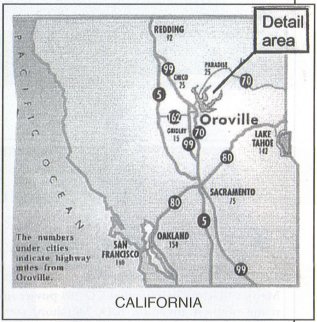
On the morning of January 12th, 1848, a carpenter, James Marshall, saw two
shiny stones in the river which he presented to John Sutter, his employer, for
examination. The stones were gold nuggets and the ensuing California gold rush
is history. .
The Big Bend mountain, in northern California, part of the Sierra-Nevada
range, at 7000 feet, provided numerous ore-carrying streams flowing from it's
top, the Big Bend meadow. Among these streams were the American River (where the
Sutter find occurred) and forks of the EI Rio de Las Plumas (Feather River).
In 1880, Eastern investors, sensing the potential for gold recovery, proposed
to construct a 12,000 foot long tunnel across the ox bow of the Feather River
where it curved around Big Bend Mountain. A dam was to be constructed at Whiskey
Bar to divert the river's flow and allow recovery of the gold ore from the
exposed bed. The Big Bend Tunnel and Mining Company bored the tunnel and the
Eocene Placer Mining Company operated the venture completing in 1887.
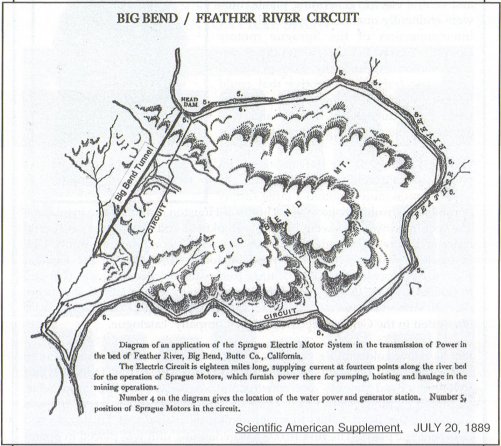
The Sprague Electric Railway and Motor Company was engaged to supply the
required motors for the placer mines since, at that time, they were the
predominant motor supplier in the industry. In Men and Volts; The Story of
General Electric, historian John W. Hammond states:
"It would seem like child's play to the present electrical engineer, for
the line was but eighteen miles in length. But for 1887 it was a considerable
undertaking. It was located in a mountainous California wilderness on the
Feather River where it encircles Big Bend Mountain. A hydroelectric generating
station supplied the circuit, in which were connected fourteen Sprague motors
scattered along the course of the stream. Their work was to drive pumps and
hoists and run dinky cars in the operation of placer mining, for the Big Bend
had gold within its rugged bosom."
A water-powered electric generating station was constructed to power the
motors used for pumping and hoists. The generating station is believed to have
been a Pelton Water Wheel connected to a dynamo. Dave Mason, Sprague's point
man, supervised the provision of this first long distance interconnection of
Sprague motors.
The Thomson-Houston Electric Company, established in 1883, was a major
supplier of electric lighting equipment and dynamos at that time. Well versed in
transmission methods due to their experience with community arc lighting and central electric generating plants, they were eminently qualified to
accomplish the interconnection of the Sprague motors along the exposed river bed
and the generating station. Additionally, they produced an electric traction
locomotive that could operate in a closed tunnel construction site without
producing the smoke and coal gasses that the steam engines produced.
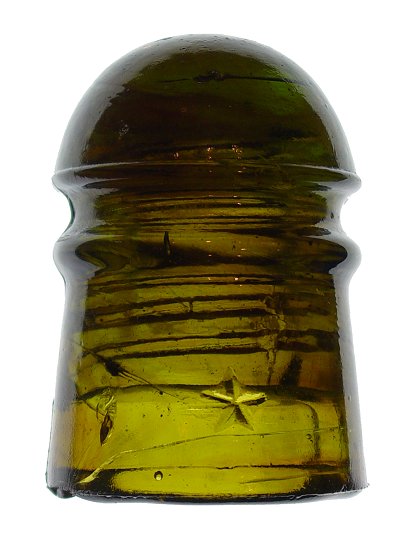
The construction of the transmission lines posed several problems of
logistics. The eighteen mile route required a large supply of cable and insulators, however, Thomson-Houston did not make insulators. The required
insulators were made by Brookfield and Hemingray on special order and were
embossed T-H. E. CO. Brookfield continued to supply T-H. E. marked insulators
until Thomas-Houston became part of the General Electric Company in 1892. At
that time, the insulator embossing was changed to G.E. CO. Later, in 1897, when
three-piece molds were adopted, it appears that the embossings were changed to a
STAR. These STAR embossings were illustrated in the General Electric Supply
Company catalogue.
Just as many gold mining ventures of the period, this project failed due to
inadequate gold recovery. However, in a positive sense, the failed Feather River
/ Big Bend tunnel/dam construction was resurrected as a power related
project by the Western Power Company in 1902. This new company was to use the
Big Bend tunnel to supply water to a reservoir for a proposed hydroelectric
plant. (The first 10,000 Kw generating unit was placed in operation in 1908.)
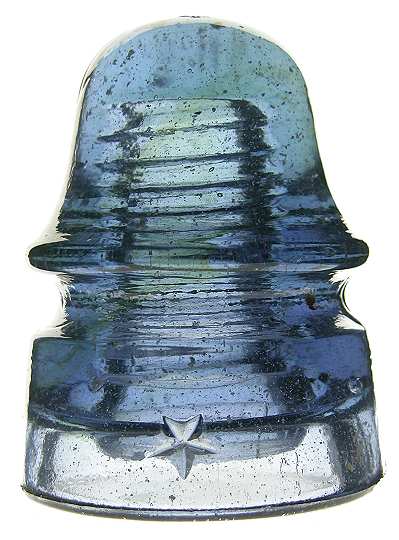
Thus, the path from the shiny stones in the American River to the STAR
embossed insulator goes by way of a gold strike in northern California, the Big
Bend Mountain and the Feather River. It includes the digging of a tunnel through
a mountain, the construction of a dam, the diversion of a river, the placer
mining of the dry ox-bow river bed and the failure of a $750,000 project in
1887. It ends in a product offering shown in a 1904 General Electric Company
Supplies catalogue.
Note:
Examination of Sprague and GE archives has not pinpointed the applications
and location of the Sprague motors or the routes of the transmission lines. The
above is based upon available information from historical societies and
published account.
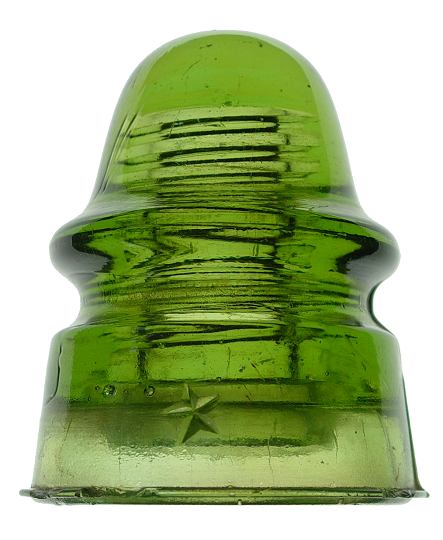
| 